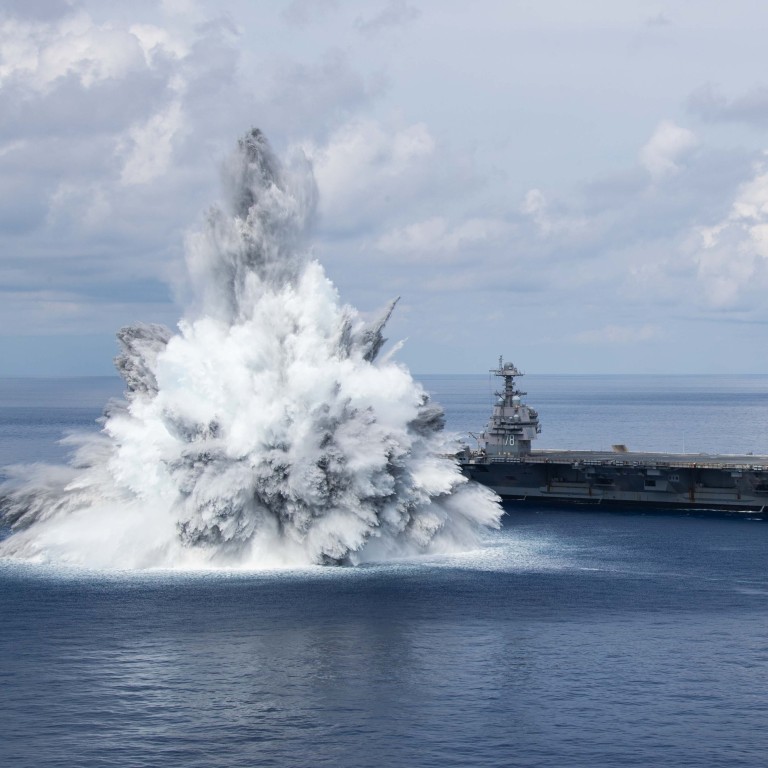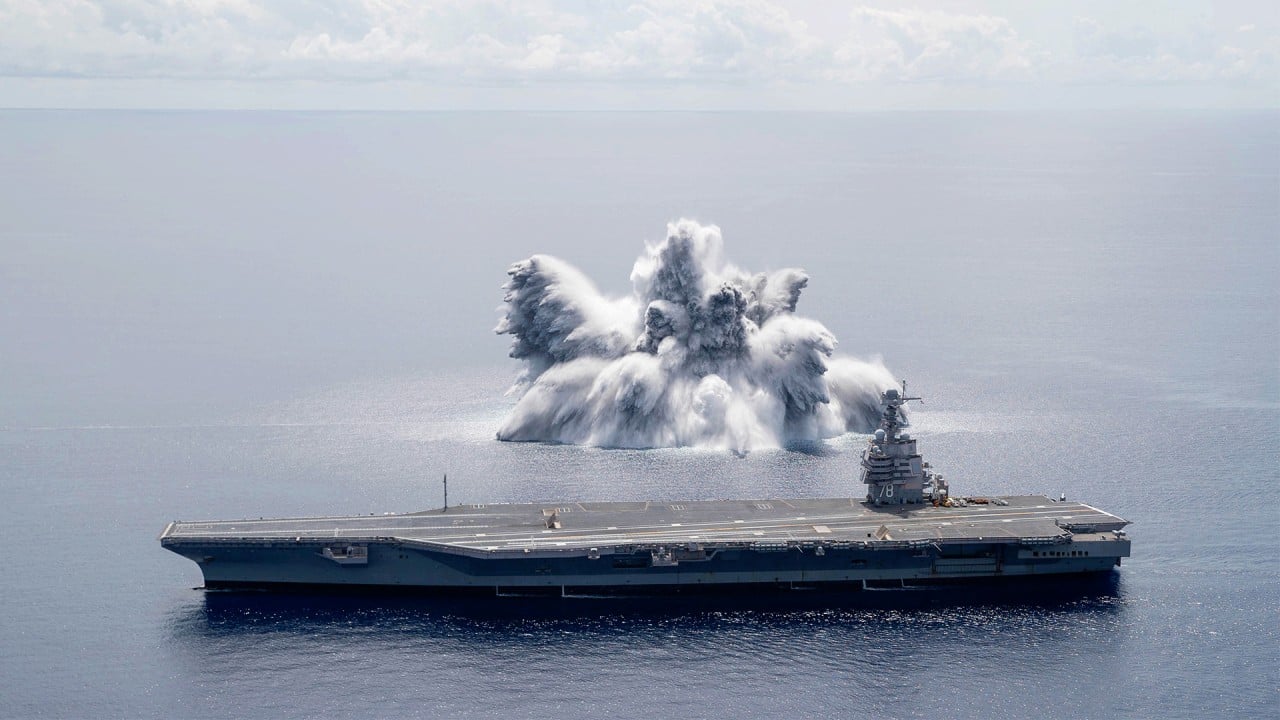
US’ aircraft carrier shock trial tells China it doesn’t fear ship-killer missiles, observer says
- USS Gerald R. Ford tested against impact from underwater detonation of 40,000lbs of explosives, equivalent to a 3.9-magnitude earthquake
- The trials send a message to China and Russia about US aircraft carriers’ resilience, former Chinese military instructor says
The US’ newest and most advanced nuclear carrier’s third and final full ship shock trial was completed on Sunday off the coast of Florida, following the previous such trials on June 18 and July 16, the American navy said in a press release on Monday.
The carrier suffered no major casualties and less damage than expected, officials said.
In the trials, held in the Atlantic Ocean, 40,000lbs (18 tonnes) of explosives – equivalent to a 3.9-magnitude earthquake – were detonated under water, each time taking place closer to the carrier. Data on the impact on the vessel was collected.

01:10
US Navy sets off explosives to test new aircraft carrier
“The tests demonstrated – and proved to the crew, fairly dramatically – that the ship will be able to withstand formidable shocks and continue to operate under extreme conditions,” said Brian Metcalf, the manager of the navy’s future aircraft carrier programme office.
Shock trials are designed to check a ship’s shock durability and ability to sustain operations in a simulated combat environment.
The minor damage to the USS Gerald R. Ford will be assessed and repaired during planned maintenance before its scheduled deployment next year.
Full ship shock trials were last conducted in 2016, on two littoral combat ships. The last aircraft carrier to undergo such a test was the USS Theodore Roosevelt, in 1987.
US vs China: who has the stronger military?
The US Navy has in recent years emphasised maintaining its supremacy in the face of competition from the Chinese navy’s shipbuilding spree. A US government document in June outlined plans to maintain a fleet of between 321 and 372 manned ships.
As of 2020, the Chinese navy had 360 ships and the US Navy 297. However, the US had more large ships, with 11 aircraft carriers to 2, and 92 cruisers and destroyers against China’s 33, as well as being more powerful in armament.
The shock trial is expected to provide highly valuable data for mass production of Ford-class aircraft carriers – the US’ first major aircraft carrier investment since the 1960s. The USS Gerald R. Ford, the first of the class, was commissioned in 2017. Two others, the USS John F. Kennedy and the USS Enterprise, are being built and two more have been ordered.
“Besides data collection, another reason to announce it was to send a message to China and Russia that the US aircraft carriers have super resilience and they are not worried about Chinese or Russian conventional anti-ship weapons,” commentator and former Chinese military instructor Song Zhongping said. “The 40,000lbs explosive blast was much bigger than any single warhead of a conventional missile or torpedo.”

06:24
Explained: the history of China’s territorial disputes
Russia is also testing a hypersonic anti-ship cruise missile, the Zircon, which could reach a maximum speed of Mach 9. It hit a ground target in a test last month.
Song said that the trial proved the Ford-class aircraft carriers could withstand some water mines or nearby missile strikes, but did not show their resistance against a direct hit.
“Ballistic missiles or hypersonic missiles could also carry electromagnetic pulse weapons that are detonated at high altitude and cause damage to the aircraft carrier, or even take it completely out of combat,” he said.

